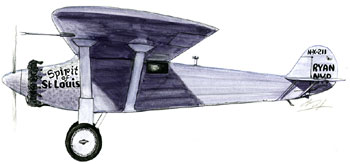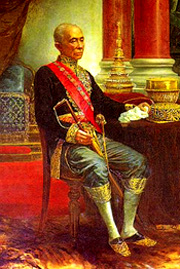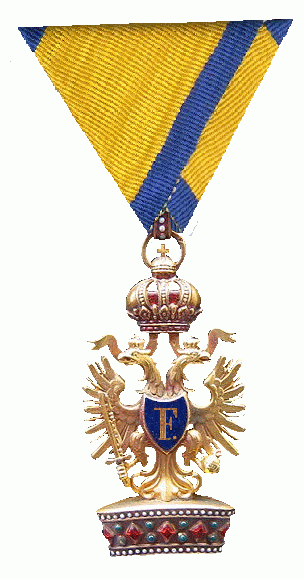|
Emil Vojnović
Emil Vojnović von Belobreska (also Emil Woinovich; 23 April 1851 – 13 February 1927) was an Austro-Hungarian Army general and historian from the Military Frontier who until 1915 was the director of the War Archives in Vienna. He also authored 11 books, mainly on war history. A street in Vienna is named after him. Early life and military career Vojnović was born in Petrinja, then part of the Slavonian Military Frontier, 23 April 1851. He attended the Theresian Military Academy in Wiener Neustadt from 1866 to 1870. He attended the k.u.k. War College from 1873 to 1875. From 1892 to 1896 he was the head of the Evidenzbureau. Vojnović was promoted to Feldmarschall-Leutnant in 1903 and General der Infanterie in 1908. Vojnović was given the title of ''von Belobreska'' in the Hungarian-Croatian nobility in 1908 and was subsequently also given the title of ''Freiherr'' in the Austrian nobility in 1916. He was a member of the Imperial Academy of Science in Vienna. Vojnović is bur ... [...More Info...] [...Related Items...] OR: [Wikipedia] [Google] [Baidu] |
Petrinja
Petrinja () is a town in central Croatia near Sisak in the historic region of Banija, Banovina. It is administratively located in Sisak-Moslavina County. On December 29, 2020, the town was 2020 Petrinja earthquake, hit by a strong earthquake with a magnitude of 6.4 , causing significant damage to the town. Name The name of Petrinja has its roots in Greek language, Greek πέτρα - ''pétra'', meaning "stone" through Latin language, Latin '':wiktionary:petrus, petrus''. Another possibility is that Petrinja was named after the church of St. Peter from the time of the Diocese of Sisak. It is said that the town existed in Ancient Rome, Roman era in the area of Zrinska Gora, which is very rich in stone. Climate Since records began in 1981, the highest temperature recorded at the local weather station was , on 14 August 2003. The coldest temperature was , on 12 January 1985. History Middle Ages West of Petrinja is Petrova gora (Peter's mountain), site of the 1097 Battle of Gvozd Mo ... [...More Info...] [...Related Items...] OR: [Wikipedia] [Google] [Baidu] |
Hungarian Nobility
The Kingdom of Hungary held a Nobility, noble class of individuals, most of whom owned landed property, from the 11th century until the mid-20th century. Initially, a diverse body of people were described as noblemen, but from the late 12th century only high-ranking royal officials were regarded as noble. Most aristocrats claimed ancestry from chieftains of the period Principality of Hungary, preceding the establishment of the kingdom around 1000; others were descended from western European knights who settled in Hungary. The lower-ranking castle warriors also held landed property and served in the royal army. From the 1170s, most privileged laymen called themselves Royal servant (Kingdom of Hungary), royal servants to emphasize their direct connection to the monarchs. The Golden Bull of 1222 established their liberties, especially tax exemption and the limitation of military obligations. From the 1220s, royal servants were associated with the nobility and the high ... [...More Info...] [...Related Items...] OR: [Wikipedia] [Google] [Baidu] |
People From Petrinja
The term "the people" refers to the public or common mass of people of a polity. As such it is a concept of human rights law, international law as well as constitutional law, particularly used for claims of popular sovereignty. In contrast, a people is any plurality of persons considered as a whole. Used in politics and law, the term "a people" refers to the collective or community of an ethnic group or nation. Concepts Legal Chapter One, Article One of the Charter of the United Nations states that "peoples" have the right to self-determination. Though the mere status as peoples and the right to self-determination, as for example in the case of Indigenous peoples (''peoples'', as in all groups of indigenous people, not merely all indigenous persons as in ''indigenous people''), does not automatically provide for independent sovereignty and therefore secession. Indeed, judge Ivor Jennings identified the inherent problems in the right of "peoples" to self-determination, as i ... [...More Info...] [...Related Items...] OR: [Wikipedia] [Google] [Baidu] |
1927 Deaths
Events January * January 1 – The British Broadcasting ''Company'' becomes the BBC, British Broadcasting ''Corporation'', when its Royal Charter of incorporation takes effect. John Reith, 1st Baron Reith, John Reith becomes the first Director-General. * January 7 ** The first transatlantic telephone call is made ''via radio'' from New York City, United States, to London, United Kingdom. ** The Harlem Globetrotters exhibition basketball team play their first ever road game in Hinckley, Illinois. * January 9 – The Laurier Palace Theatre fire at a movie theatre in Montreal, Quebec, Canada, kills 78 children. * January 10 – Fritz Lang's futuristic film ''Metropolis (1927 film), Metropolis'' is released in Germany. * January 11 – Louis B. Mayer, head of film studio Metro-Goldwyn-Mayer (MGM), announces the creation of the Academy of Motion Picture Arts and Sciences, at a banquet in Los Angeles, California. * January 24 – U.S. Marines United States occ ... [...More Info...] [...Related Items...] OR: [Wikipedia] [Google] [Baidu] |
1851 Births
Events January–March * January 11 – Hong Xiuquan officially begins the Taiping Rebellion in China, one of the bloodiest revolts that would lead to 20 million deaths. * January 15 – Christian Female College, modern-day Columbia College, receives its charter from the Missouri General Assembly. * January 23 – The flip of a coin, subsequently named the Portland Penny, determines whether a new city in the Oregon Territory will be named after Boston, Massachusetts, or Portland, Maine, with Portland winning. * January 28 – Northwestern University is founded in Illinois. * February 1 – '' Brandtaucher'', the oldest surviving submersible craft, sinks during acceptance trials in the German port of Kiel, but the designer, Wilhelm Bauer, and the two crew escape successfully. * February 6 – Black Thursday occurs in Australia as bushfires sweep across the state of Victoria, burning about a quarter of its area. * February 12 – ... [...More Info...] [...Related Items...] OR: [Wikipedia] [Google] [Baidu] |
Order Of Franz Joseph
The Imperial Austrian Order of Franz Joseph () was founded by Emperor Franz Joseph I of Austria on 2 December 1849, on the first anniversary of his accession to the imperial throne. Classes The order was originally awarded in three classes: ''Grand Cross,'' ''Commander's Cross,'' and ''Knight's Cross.'' In 1869, the class of ''Commander with Star'' was added, which ranked immediately below the Grand Cross. The ''Officer's Cross'', which ranked between Commander and Knight, was introduced on 1 February 1901. The order ceased to exist as a governmental award with the dissolution of the Austro-Hungarian Empire in 1918. It was not re-established with the foundation of the Republic of Austria. It has been revived as of 2017 by Dominic von Habsburg#Marriages and children, Sandor Habsburg-Lothringen as a private association. Description Knights wore the decoration suspended from a triangular ribbon on the left breast. Officers wore it on the left breast without a ribbon. Commanders ... [...More Info...] [...Related Items...] OR: [Wikipedia] [Google] [Baidu] |
Order Of Leopold (Austria)
The Austrian Imperial Order of Leopold () () was founded by Franz I of Austria on 8 January 1808. The order's statutes stipulated only three grades: Grand Cross, Commander and Knight. During the war, in common with the other Austrian Empire, Austrian and later Austria-Hungary, Austro-Hungarian decorations, war decoration (represented by a laurel wreath) and/or swords were added to reward meritorious service and bravery in the face of the enemy. An Imperial Decree of 1 February 1901 ordered that in future, the senior grade would be split into two separate awards. From then onwards, there were four ranks: Grand Cross, First Class, Commander, Knight. Until 18 July 1884, the award of the order also entitled the recipient, if he was not already of that standing, to be raised to the following appointments and/or ranks of the nobility: *Grand Cross: Privy Councillor *Commander: Baron *Knight: Ritter Insignia Both the Grand Cross and the First Class members of the Order wore (on for ... [...More Info...] [...Related Items...] OR: [Wikipedia] [Google] [Baidu] |
Order Of The Iron Crown (Austria)
The Imperial Order of the Iron Crown (; ) was one of the highest orders of merit in the Austrian Empire and Austria-Hungary until 1918. It was founded in 1815 by Emperor Franz I of Austria as a re-establishment of the original Order of the Iron Crown, which previously had been an order of the Napoleonic Kingdom of Italy. The order had three classes and, until 1884, all classes conferred automatic hereditary ennoblement. The third class conferred the rank of ''Ritter'', the second class conferred the rank of ''Baron'', and the first class conferred the title of Privy Councillor, the style of Excellency and the right to attend court. According to the order's statutes, only a limited number of members throughout the empire were allowed at any given time. The maximum number of 1st class knights was 20, for the 2nd class it was 30 and for the 3rd class 50, limiting the total number of members to 100 at any given time. History The Holy Roman Empire, ruled by the Habsburg dynasty, ga ... [...More Info...] [...Related Items...] OR: [Wikipedia] [Google] [Baidu] |
Zentralfriedhof
The Vienna Central Cemetery () is one of the largest cemeteries in the world by number of interred, and is the most well-known among Vienna's nearly 50 cemeteries. The cemetery's name is descriptive of its significance as Vienna's biggest cemetery, not of its geographic location, as it is not in the city center of the Austrian capital, but on the southern outskirts, in the outer city district of Simmering. History and description Unlike many others, the Vienna Central Cemetery is not one that has evolved slowly. The decision to establish a new, big cemetery for Vienna came in 1863 when it became clear that – due to industrialization – the city's population would eventually increase to such an extent that the existing communal cemeteries would prove to be insufficient. City leaders expected that Vienna, then capital of the large Austro-Hungarian Empire, would grow to four million inhabitants by the end of the 20th century, as no one foresaw the Empire's collapse in 1918. The ... [...More Info...] [...Related Items...] OR: [Wikipedia] [Google] [Baidu] |
Austrian Academy Of Sciences
The Austrian Academy of Sciences (; ÖAW) is a legal entity under the special protection of the Republic of Austria. According to the statutes of the Academy its mission is to promote the sciences and humanities in every respect and in every field, particularly in fundamental research. History In 1713, Gottfried Wilhelm Leibniz suggested to establish an Academy, inspired by the Royal Society and the French Academy of Sciences. The "Kaiserliche Akademie der Wissenschaften in Wien" was finally established by Imperial Patent on 14 May 1847. The academy soon began extensive research. In the humanities the academy started with researching and publishing important historical sources of Austria. Research in natural science also covered a wide variety of topics. The 1921 federal law guaranteed the legal basis of the academy in the newly founded First Austrian Republic. From the mid-1960s onwards it became the country's leading institution in the field of non-university basic research. ... [...More Info...] [...Related Items...] OR: [Wikipedia] [Google] [Baidu] |
Austrian Nobility
The Austrian nobility () is a status group that was officially abolished in 1919 after the fall of Austria-Hungary. Austria's system of nobility was very similar to that of Germany (see German nobility), as both countries were previously part of the Holy Roman Empire (962–1806). Any noble living in the Habsburg-ruled lands, and who owed allegiance to the dynasty and therefore to the emperor, was also considered part of the Austrian aristocracy. This applied to any member of the Bohemian, Hungarian, Polish, Croatian, and other nobilities in the Habsburg dominions. Attempting to differentiate between ethnicities can be difficult, especially for nobles during the eras of the Holy Roman Empire and the Austro-Hungarian monarchy (1867–1918). A noble from Galicia, for instance, such as the Count Jordan-Rozwadowski (see section "Noble titles" below under ''Graf/Gräfin'' (count/countess)), could call himself a Polish noble, but he also rightfully belonged to the Austrian nobil ... [...More Info...] [...Related Items...] OR: [Wikipedia] [Google] [Baidu] |
Freiherr
(; male, abbreviated as ), (; his wife, abbreviated as , ) and (, his unmarried daughters and maiden aunts) are designations used as titles of nobility in the German-speaking areas of the Holy Roman Empire, the Austro-Hungarian Empire and in its various successor states, including Austria, Prussia, Bavaria, Liechtenstein, Luxembourg, etc. Traditionally, it denotes the titled rank within the nobility above ' (knight) and ' (nobility without a specific title) and below ' ( count or earl). The title superseded the earlier medieval form, '. It corresponds approximately to the English baron in rank. The Duden orthography of the German language references the French nobility title of ''Baron'', deriving from the Latin-Germanic combination ''liber baro'' (which also means "free lord"), as corresponding to the German "Freiherr"; and that ''Baron'' is a corresponding salutation for a ''Freiherr''. Duden; Definition of ''Baron, der'' (in German)/ref> ' in the feudal system The title ... [...More Info...] [...Related Items...] OR: [Wikipedia] [Google] [Baidu] |




